Timeline of Events
The Holocaust was the systematic, state-sponsored persecution and murder of six million Jews by the Nazi regime and its allies and collaborators. It took place between 1933 and 1945. In 1933, more than 9 million Jews lived in Europe (1.7% of the total population). By 1945, the Germans and their allies and collaborators had killed nearly two out of every three European Jews. Nazi policies also led to the discrimination, persecution, and murder of millions of others. Explore a timeline of events that occurred before, during, and after the Holocaust.
Before 1933
WWI, its Aftermath, and the Growth of the Nazi Party
Countries across Europe struggled to recover from the devastation caused by World War I after it ended in 1918. This was a time marked by massive social and political change, revolution, and the establishment of new states. In this postwar environment, extreme nationalism, racism, and antisemitism found fertile ground. The Nazi and the Italian Fascist political parties, along with many other similar groups across Europe, emerged from this chaos to become visible threats to new and fragile democracies, including Germany's Weimar Republic.
Highlighted events
1933–1938
Prewar Nazi Germany and the Beginnings of the Holocaust
Following Adolf Hitler’s appointment as German chancellor on January 30, 1933, the Nazis and their allies transformed Germany from a multi-party republic into a one-party dictatorship. The Nazi dictatorship implemented radical racial, political, and social policies. During the first six years of Hitler’s rule, German Jews felt the effects of legislation that transformed them from “citizens” to “outcasts.” In the 1930s, the regime also targeted a variety of alleged “enemies of the state” within German society.
Highlighted events
1939–1941
World War II and the Mass Killing of Jews
On September 1, 1939, Nazi Germany unleashed World War II by invading Poland. The war radicalized Nazi policies, leading to brutal occupations of conquered territory. German authorities in occupied Poland established ghettos for Jews. They also introduced harsh measures against non-Jewish Poles. Inside Germany and in occupied Polish territories, German physicians and SS staff used gas chambers to kill institutionalized persons with disabilities. In June 1941, German troops invaded the Soviet Union, unleashing a “racial war” that led to the mass murder of Soviet Jews and Soviet prisoners of war. In the weeks and months that followed, Nazi Germany’s leaders decided to carry out the systematic mass murder of Europe’s Jews.
Highlighted events
1942–1945
Intensification of Mass Killings
In early 1942, Nazi Germany stood at the height of its power. Germany and its allies controlled most of Europe and even parts of North Africa. The SS had established special killing centers with large gas chambers, expanding the “Final Solution,” the mass murder of European Jews. The perpetrators counted on the cooperation of government agencies, local collaborators, and the support or acquiescence of the general population. Even as the war turned against Germany, the Nazi leadership continued its murderous polices. By May 1945, when the war ended, the Nazis and their allies had killed about 6 million Jews. Millions more people had suffered grievous oppression or death under Nazi tyranny.
Highlighted events
After 1945
End of WWII, Aftermath of the Holocaust, and Genocide after 1945
As Allied troops drove German troops towards defeat, they uncovered Nazi camps and massive evidence of Nazi crimes. The war had uprooted millions who were now “displaced persons” (DPs) waiting for repatriation to their home countries. For tens of thousands of Holocaust survivors, the choices were limited and daunting. Allied occupation forces faced enormous responsibilities: housing and feeding DPs, denazifying and democratizing Germany, and bringing those responsible for Nazi crimes to justice. This section also addresses genocides that have occurred since the Holocaust.


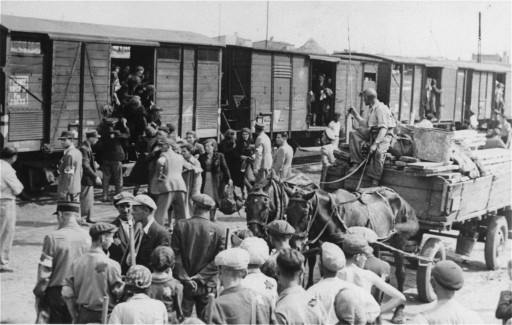
![Allied delegates in the Hall of Mirrors at Versailles witness the German delegation's acceptance of the terms of the Treaty Of Versailles, ... [LCID: tl104]](/images/small/ff398e6d-3fc3-4622-9bf6-963c732cb282.jpg)

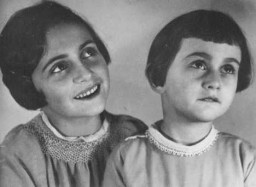
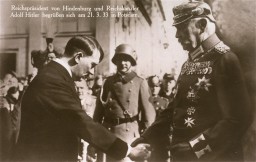
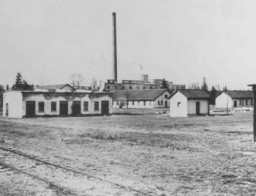
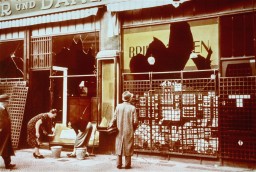
![Polish civilians walk by a section of the wall that separated the Warsaw ghetto from the rest of the city. [LCID: 78390]](/images/small/e8645cd0-50d8-41f5-8e31-91bd545b6c97.jpg)
![Chelmno environs, spring 1942 [LCID: che42060]](/images/small/c1419b23-b517-43a2-844d-2aae4e653a76.gif)
![Video still: Japan attacks Pearl Harbor [LCID: dph0217a]](/images/thumb/3879af1c-fad6-48ed-a0ed-6b0f3be221b1.jpg)

![German soldiers direct artillery against a pocket of resistance during the Warsaw ghetto uprising. [LCID: 34083b]](/images/small/edb20203-c483-4c05-ba79-e79199de24be.jpeg)
![Assault troops approach Omaha Beach on D-Day, June 6, 1944. [LCID: sc078]](/images/small/b3a43994-8230-4211-ab2e-c67ac4a336a8.jpg)
![Mourners and local residents shovel dirt into the mass grave of the victims of the Kielce pogrom during the public burial. [LCID: 14390]](/images/small/9ff2f72b-2a06-4b23-919e-7afc5ec9671c.jpg)
![An armored car parked outside the gate of the Palace of Justice in Nuremberg on the day the judgement of the International Military ... [LCID: 94550]](/images/small/2f1cb77a-3d12-4db2-ab17-89573f72d614.jpeg)
![Offices of the International Criminal Tribunal for Rwanda (ICTR) in Arusha, Tanzania. [LCID: geno01]](/images/small/4ca2bf69-3243-463d-b30c-3b630800624d.jpg)